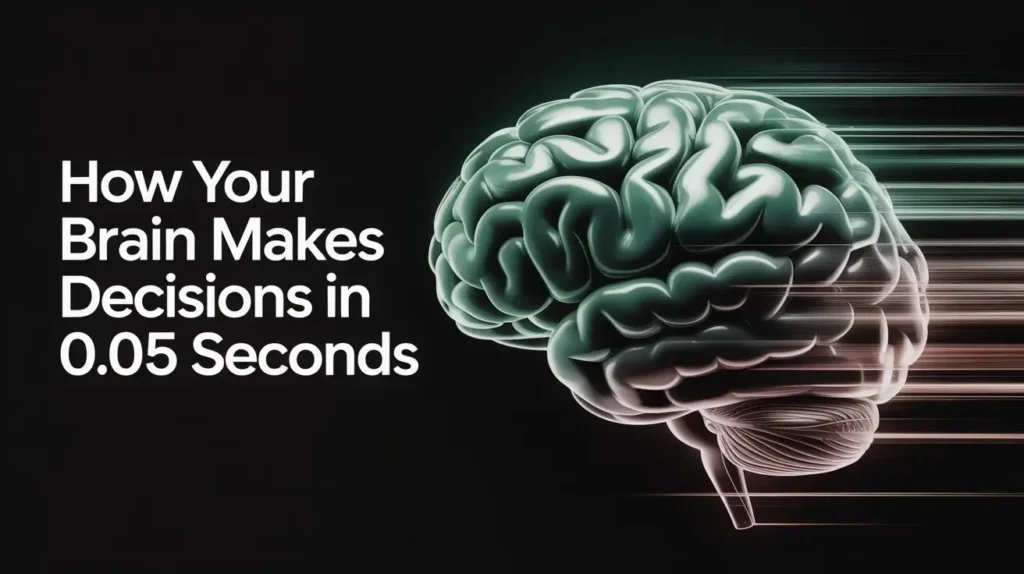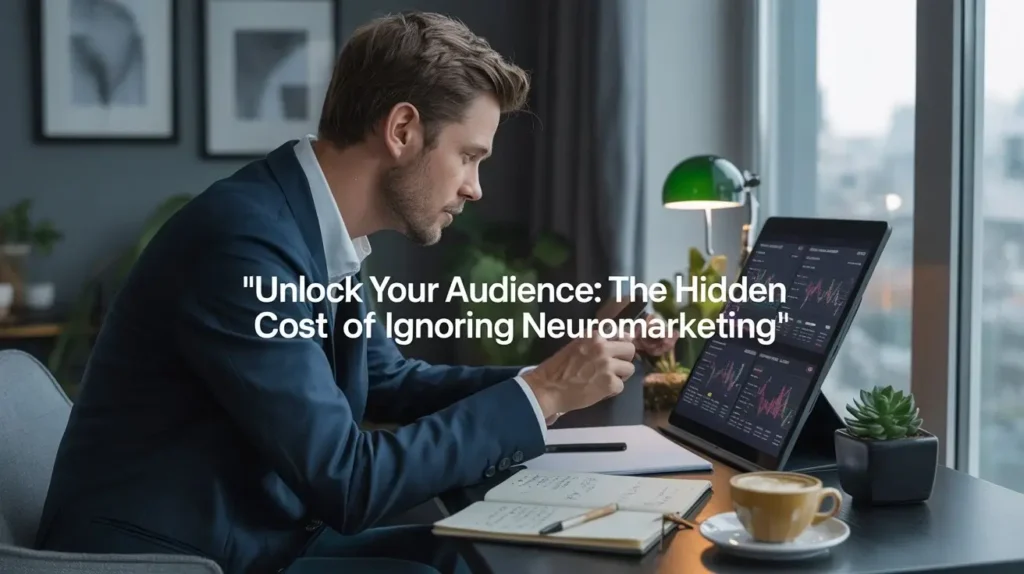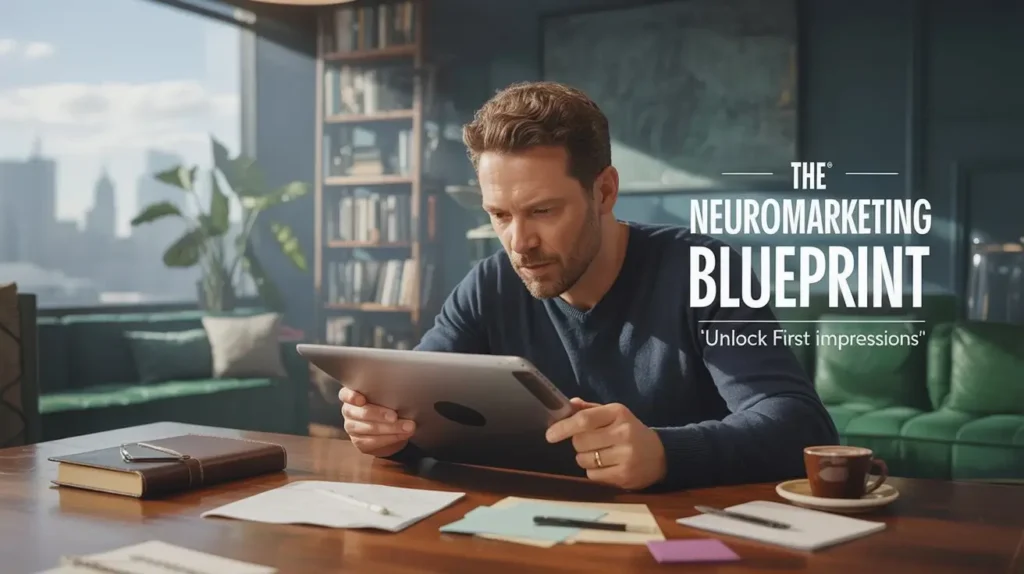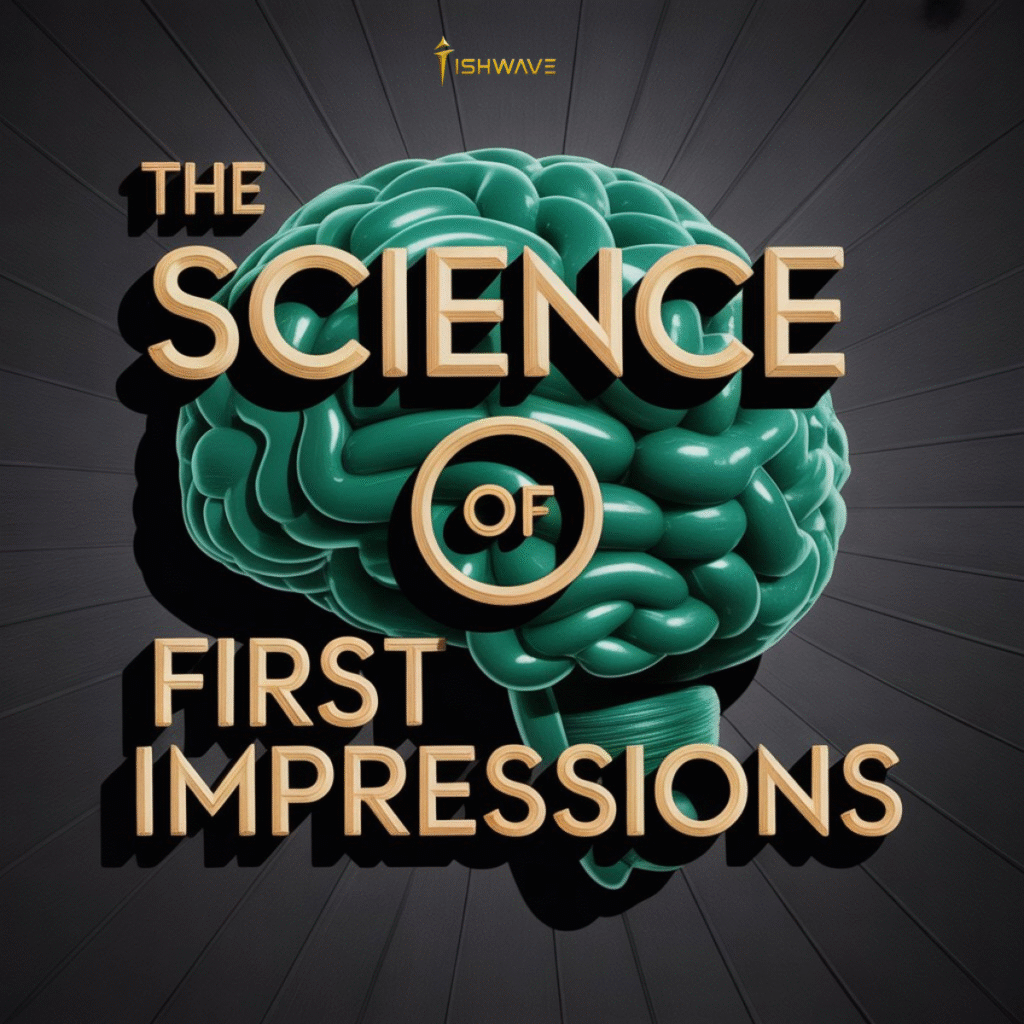
Introduction – Snap Judgments & Brand Impact
Have you ever noticed how sometimes you just know whether you like a brand or not—before reading a single word?
That split-second feeling isn’t magic; it’s neuroscience. Your brain has already begun making decisions in under 0.05 seconds. Especially for conscious or sustainable brands, understanding those seconds can be the difference between being ignored or being trusted.
In this post, we’ll explore how your brain makes lightning-fast decisions, what that means for marketing, and how ethical brands can use these insights to build real connection. We’ll cover research, practical steps, and clear examples so you can lean into this power. Let’s dive in.
Many brands invest heavily in messaging, campaigns, product features, pricing—but too often they overlook the very first moments when someone sees their brand. The design, color palette, layout, or tone might be off. The consequence? Visitors bounce, trust doesn’t form, and potential customers disengage before they even “read.”
Imagine putting effort into beautiful content or ethical missions, only to be passed by because on their first glance people feel “something isn’t right.” Maybe the website feels cluttered, maybe visuals clash, maybe copy feels generic. On a subconscious level, people feel dissonance—they don’t convert. Worse, they might leave with a slight negative feeling (doubt, confusion). That’s damage you can’t easily measure but deeply affects brand perception.
Brands—especially sustainable, mission-driven ones—can reverse this by designing with brain science in mind. That means optimizing first impressions: fast load speed, trustworthy visuals, coherent layout, emotionally resonant copy, color psychology, credibility cues. When you do this, you reduce the chance someone dismisses you in those <0.05 seconds, and instead, gain trust and engagement from the start.
The Science Behind Instant Decisions

What Happens in the Brain During the First Moments
✅ Our brains are wired to scan and categorise before consciously thinking. The subconscious mind notices patterns—visual contrast, color harmony, symmetry—long before words register. Research has shown that brain imaging can predict decisions seconds before we are aware of making them.
✅ Principles like the Somatic Marker Hypothesis (Antonio Damasio) show how emotions guide decision making: we’re influenced by bodily sensations tied to emotions, often unconsciously.
Subconscious vs Conscious Processing
✅ Conscious reasoning is slow, deliberate. Subconscious cues are fast, context rich. Brands often over-rely on conscious messaging (features, facts) while under-leveraging subconscious triggers (emotion, design, first impressions).
✅ Studies in unconscious perceptual processing show that people can form preferences without consciously perceiving all details, especially when visual stimuli are strong.
Color & Trust: A Key Cue
✅ The role of color in influencing trust is well documented. For example, a study on e-commerce websites found that blue as a dominant color inspires more trust than others; black or overly dark or conflicting palettes can reduce perceived credibility.
✅ Another study across cultures showed consistent associations between certain hues (blue, green) and trust/emotion.
The Problem – Why Brands Miss the Mark

Most Brands Focus on Selling, Not Connecting
Many brands believe good marketing is just about running ads or posting frequently. But in reality, people’s brains don’t connect with brands because of frequency — they connect because of feeling. If your messaging feels generic, robotic, or inconsistent, your audience’s subconscious simply tunes out.
First Impressions Happen in 0.05 Seconds
The brain is wired for survival. It scans a new brand’s website or social post in 50 milliseconds to decide: “safe or unsafe,” “trust or avoid.” If your design, colors, and copy don’t instantly signal safety and relevance, you lose them before they even start reading.
Neuromarketing Is the Missing Link
Traditional marketing often ignores how the human brain actually works. Without applying neuromarketing — the science of aligning your visuals, words, and emotions with how people think — you’re essentially guessing. That’s why even well-funded campaigns often flop. Understanding brain triggers gives you an edge: it lets you “speak” to your audience on a subconscious level, creating instant trust and curiosity instead of indifference.
The Hidden Cost of Ignoring Neuromarketing

Every Lost Impression = Lost Revenue
When your marketing doesn’t align with how people think, you lose attention, clicks, and ultimately sales. Even small subconscious “red flags” (like cluttered designs, confusing copy, or mismatched visuals) trigger avoidance in the brain. That means wasted ad spend and fewer leads.
Trust Deficit Hurts Long-Term Growth
If your audience feels even a hint of inconsistency, they unconsciously distrust you. This leads to lower conversion rates, poor engagement, and weaker brand loyalty. The cost of rebuilding lost trust is far higher than the cost of getting it right from the start.
Science Over Guesswork
Neuromarketing isn’t manipulation — it’s empathy powered by science. It’s understanding that humans process visuals 60,000x faster than text, or that emotions drive 95% of purchase decisions. Brands that ignore these truths end up creating content that “looks nice” but doesn’t convert. Brands that embrace it create experiences that feel intuitive, safe, and memorable.
The Solution – How Sustainable Brands Can Leverage It

Design Speaks Before Words Do
Your layout, spacing, and visuals are your silent persuaders. Clean design with clear hierarchy signals professionalism and safety to the brain. Messy or inconsistent layouts signal danger — even if the viewer can’t explain why.
Consistency Builds Comfort
A consistent color palette, font family, and tone across platforms create familiarity. Familiarity = trust. When everything looks aligned, the subconscious relaxes and gives you permission to share your message. Inconsistency, on the other hand, creates friction and hesitation.
Practical Takeaway for Beginners
Audit your website or social media: Are your designs simple and scannable? Is the most important message above the fold? Do you have one clear call-to-action per page? Reduce distractions and the brain will reward you with more time, attention, and clicks.
Color Psychology & Emotional Cues
Colors Evoke Emotions Instantly
Before the brain reads a single word, it “reads” your colors. Blue signals trust and professionalism. Green signals sustainability, health, and calm. Red signals urgency and excitement. These emotional cues happen subconsciously and shape how people feel about your brand.
Match Colors to Your Brand Promise
A sustainable brand using earthy greens, calming neutrals, and soft textures feels authentic. A fintech brand using blue and grey feels secure and serious. When colors don’t match your message, the brain senses a mismatch and hesitates.
How to Use This Today
Audit your visual assets. Ask: “Do these colors evoke the emotions we want our audience to feel?” Adjust your palette to reflect your core values. Color psychology isn’t decoration — it’s a trust-building tool.
Crafting Copy That Resonates Instantly
Hook the Brain in the First Sentence
You have less than a second to capture attention. Start with a surprising fact, a relatable pain point, or an intriguing question. For example: “Did you know your brain decides trust faster than you blink?” That instantly activates curiosity.
Speak to Emotions, Not Just Features
Instead of listing what you do (“We build websites”), frame it as a transformation (“We create websites that make visitors trust you in seconds”). People don’t buy services — they buy feelings of safety, ease, and progress.
Practical Copy Tips
Use short sentences, active verbs, and sensory words. Break your text into small chunks for easy scanning. Ask rhetorical questions to keep the reader’s brain engaged. This style feels personal, reduces mental effort, and creates a “conversation” rather than a lecture.
Building Ethical & Authentic Connections
Trust Is Earned Through Transparency
Today’s audiences can sense manipulation instantly. Ethical neuromarketing is about helping your audience make better decisions, not tricking them into buying.
Show Real People and Real Stories
Feature customer testimonials, behind-the-scenes content, and honest impact metrics. Authentic visuals and stories lower skepticism and build emotional closeness.
Align Values for Deeper Loyalty
Your brand values should resonate with your audience’s values. Show how your business practices sustainability, fairness, or innovation. The subconscious mind rewards brands that feel honest and aligned — which means higher loyalty and word-of-mouth.
The Neuromarketing Blueprint for First Impressions

Map the First 5 Seconds of ExperienceLook at your homepage or ad from a fresh perspective: what does a visitor see first? Is it cluttered, or is your core promise clear and visually supported? Those first seconds decide whether the brain stays or leaves. Integrate Visual + Verbal CuesYour copy, colors, and layout should tell the same story. Mixed signals confuse the brain and trigger avoidance. Consistency creates a sense of “I can trust this.” Blueprint for BeginnersUse this simple sequence: Hook → Visual Trust → Clear Promise → Call-to-Action. Start with a compelling headline, support it with trust-building visuals (clean design, authentic photos), state your benefit in plain language, then guide the visitor to one simple next step. This formula works for landing pages, social posts, and ads.
|
SEO & Keyword Strategy for Brands: How Your Brain Makes Decisions Instantly

When it comes to marketing, your audience’s brain makes decisions instantly. Understanding this is the first step in creating an SEO strategy that resonates. It’s not just about ranking on Google — it’s about designing content that triggers subconscious trust and encourages engagement before the visitor even consciously decides.
Why Neuroscience Marketing Matters for SEO
Most brands focus on keywords alone, but consumer psychology shows that trust cues, emotional resonance, and clarity are equally important. Using first impression marketing techniques in meta descriptions, headings, and content snippets ensures that users feel confident and intrigued, increasing click-through rates and dwell time.
Key Steps for Optimized SEO Strategy
✅ Keyword Research with Brain Triggers: Combine high-traffic keywords with emotionally charged terms to align with emotional branding.
✅Content Structuring for Trust: Use clear headings, bullet points, and actionable tips to signal authority and credibility.
✅ Internal & External Linking: Link to related posts (e.g., “The Science Behind Instant Decisions”) and credible sources to boost neuroscience marketing authority.
✅Monitor Behavioral Signals: Track engagement metrics like time on page and scroll depth to see if trust cues are working.
By blending sustainable brand marketing principles with keyword strategy, you can craft content that isn’t just discoverable but also memorable, authentic, and persuasive. When you optimize SEO with the brain in mind, you turn fleeting attention into genuine connection.
Conclusion – Turning Split-Second Decisions Into Lasting Impact

First Impressions Decide Everything
Your audience’s brain isn’t waiting until the third paragraph or the final slide to judge you. In the first 0.05 seconds, it has already decided whether you feel trustworthy, relevant, and worth its attention. That’s why your design, colors, and words aren’t “just decoration” — they’re silent persuaders shaping subconscious trust and emotion.
Trust Is Built Before the Pitch
When you intentionally design for clarity, empathy, and values from the very start, you do more than grab attention — you build connection. People feel safe, understood, and respected. That’s the difference between a campaign that earns quick clicks and one that sparks lasting loyalty and advocacy.
Neuromarketing Isn’t Manipulation — It’s Respect
This approach isn’t about tricks or gimmicks. It’s about aligning your brand experience with how humans naturally think and decide. By caring about how your audience’s brain works, you create marketing that feels intuitive, authentic, and memorable — the kind people want to engage with and share.
Your Turn — Start the Conversation
If you found this helpful, share it with someone who cares about authentic marketing.
Comment below: Which part of your brand (design, voice, visuals) do you think needs a trust boost?
Let’s start that conversation and make marketing not only smarter but also more human.


